Joshua Tree National Park boasts a fascinating variety of plants and animals that live where two distinct ecosystems of the Colorado Desert and the Mojave Desert meet. Sculpted by strong winds and occasional torrents of rain, the surreal geologic features of twisted rock add to the wonder of this vast wilderness in Southern California.
Joshua Tree also protects a rich cultural history: the area has been inhabited by humans for over 5,000 years. But it wasn't until 1984 that it was established as a national park. Located just a few hours outside of Los Angeles, this desert wilderness is an ideal location for many outdoor activities such as rock climbing, hiking, bird watching, and the dark night skies make for excellent stargazing. The national park spans about 800,000 acres, and sees more than 2.8 million visitors each year.
My name is Rob Decker and I'm a photographer and graphic artist with a single great passion for America's National Parks! I've been to 51 of our 62 National Parks — and Joshua Tree is a unique park — given its geographical and geological significance. I have explored most areas of the park — so I'm ready to help! So if this is your first time to the park, or you're returning after many years, here are some of the best things to do in Joshua Tree National Park!
Rock Climbing
Joshua Tree National Park is one of the world's most popular climbing destinations. Thousands of cracks, slabs, and boulders, all piled across a vast desert landscape that attracts climbers from around the globe.
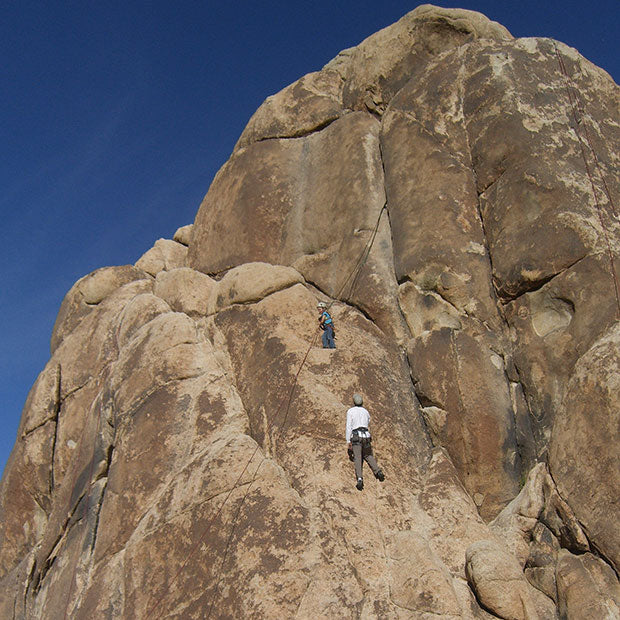
The climbing opportunities in Joshua Tree consist of varying levels of difficulty, making it an ideal location for both new and experienced climbers. At Climber's Coffee, visitors can meet Joshua Tree's climbing ranger and socialize with other visiting climbers. Located at the Hidden Valley Campground from 8:00-10:00 am on Saturdays and Sundays from mid-October through April, visitors can bring their own mug and enjoy a free cup of coffee, tea, or cocoa.
Looking to learn how to climb or just want to improve your climbing skills? You may want to consider a guided day or class. Be sure that your guide is permitted to work in Joshua Tree, as there are various certifications and requirements guides must possess in order to work within the park. A guide can also take you to the most suitable spots for your climbing level, as well as provide another level of safety for new climbers or those new to Joshua Tree. If you are unfamiliar with the park, you can purchase a climbing guide or hiking map at the park visitor centers and at various outdoor shops in the nearby communities.
For beginners, some of the best climbing spots include Intersection Rock, Quail Springs Rock, Atlantis Wall, and Thin Wall. More experienced climbers can find overhanging face climbing like Big Moe, steep crack climbing such as Clean and Jerk and Wangerbanger, vertical face climbing on thin edges such as Loose Lady or Possessed By Elvis, and multi-pitch climbing up on Lost Horse Wall and Saddle Rock.
Climbing in Joshua Tree is great all year round, but the best time is October-November and March-April. During the winter, the conditions in the middle of the day are quite comfortable, while in the summer, climbers can avoid the extreme heat by climbing in the early-mid morning and late afternoon-evening.
Hiking
Joshua Tree National Park has a wide range hiking opportunities with over 300 miles of trails. There is an assortment of trails ranging from mild (10 minute loops) to challenging (6 hour backcountry) and everything in between. It is important to note that pets are not permitted on any trails in the park, except for the paved Oasis of Mara Trail. It is also recommended that hikers bring plenty of water, as natural water sources are scarce.
Barker Dam Loop Trail

One of my favorite hikes is this easy, 1.1 mile loop with minimal elevation gain. The presence of standing water brings a unique set of freshwater species to this trail, which you see in and around Barker Dam. The trail winds through bouldery outcrops with pinyon-oak woodlands, desert willow riparian corridors, and loamy basins dominated by Joshua tree woodlands or creosote bush scrub.
Hidden Valley Trail
Hidden Valley is just one of the many trails suited to a shorter but scenic hike. This low-impact, 1 mile loop provides a unique opportunity for those interested in seeing the vast vegetation found in the park. On this scenic trail, you can find Joshua Tree, pinyon, juniper and oak trees, as well as mesquite, yucca, nolina, and various cacti. This trail also winds among massive boulders making it a popular spot for rock climbing.
Cholla Cactus Garden
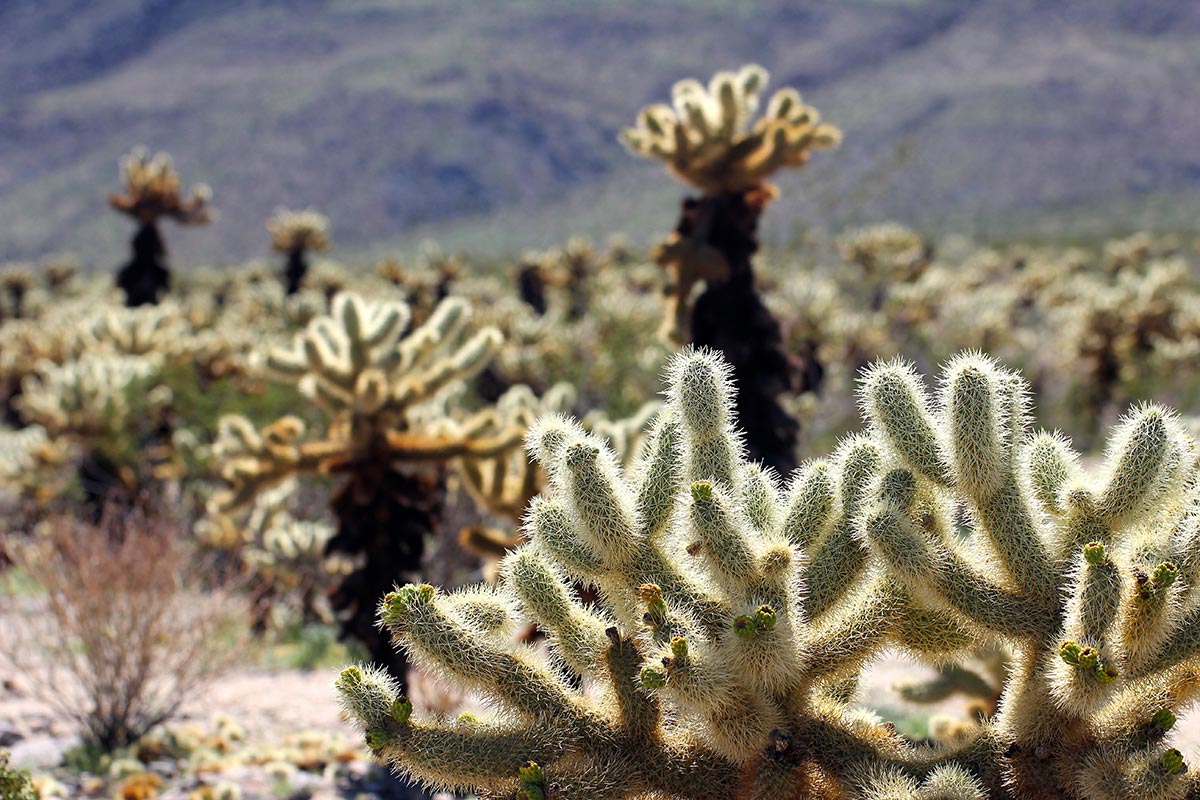
This quarter-mile loop is ideal for viewing thousands of densely concentrated, naturally growing cactus. Be sure to stay on the trail, wear closed-toe shoes, and be aware of surrounding prickly cactus.
Lost Horse Mine
The Lost Horse Mine trail is a popular destination for Joshua Tree visitors looking for a moderate hike. The 4 mile loop follows the road developed by gold miners used to haul ore and supplies before the Gold Rush. Although the site has been stabilized, the mine shafts are still considered dangerous and the historic structures are easily damaged, so be sure to stay on the trail in order to help protect this historic site.
Boy Scout Hiking Trail
One of the most challenging hikes in Joshua Tree, this one way 8 mile trail takes hikers deep into the Wonderland of Rocks. It is encouraged that visitors stay on trail to avoid getting lost among the boulders. Vehicle shuttle is strongly recommended for visitors planning on hiking the full length of the trail.
Bird Watching
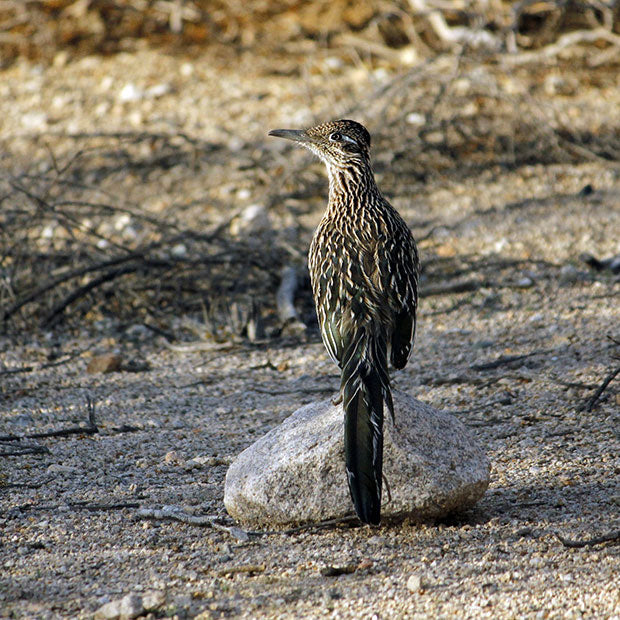
Joshua Tree is home to various southwestern bird species that are sure to excite any visiting bird watchers. Throughout the year, visitors may see any of the 250 different species that visit the park, such as the greater roadrunner, phainopepla, mockingbird, verdin, cactus wren, rock wren, mourning dove, Le Conte's thrasher, and Gambel's quail. Local birds of prey include the red-tailed hawk, American kestrel, Cooper's hawk, and prairie falcon. During winter and into March, the white-crowned sparrow, dark-eyed junco, sage sparrow, cedar waxwing, American robin, and hermit thrush can be seen in the park. Summer species include the Bendire's thrasher, ash-throated flycatcher, western kingbird, Scott's oriole, northern oriole, and western bluebird. Some popular birding spots include Barker Dam, the Oasis of Mara, Cottonwood Spring, and the Smith Water Canyon.
Stargazing

For those wishing to escape from artificial light and witness the beautiful night sky, Joshua Tree National Park offers some of the darkest nights for stargazing in Southern California and the chance for visitors to admire the Milky Way for the first time in their lives. There is also an annual Night Sky Festival consisting of over 20 telescopes, music, Constellation Tours, and Sky Stories. The festival typically takes place in the fall and tickets go on sale in early summer.
Camping & Lodging
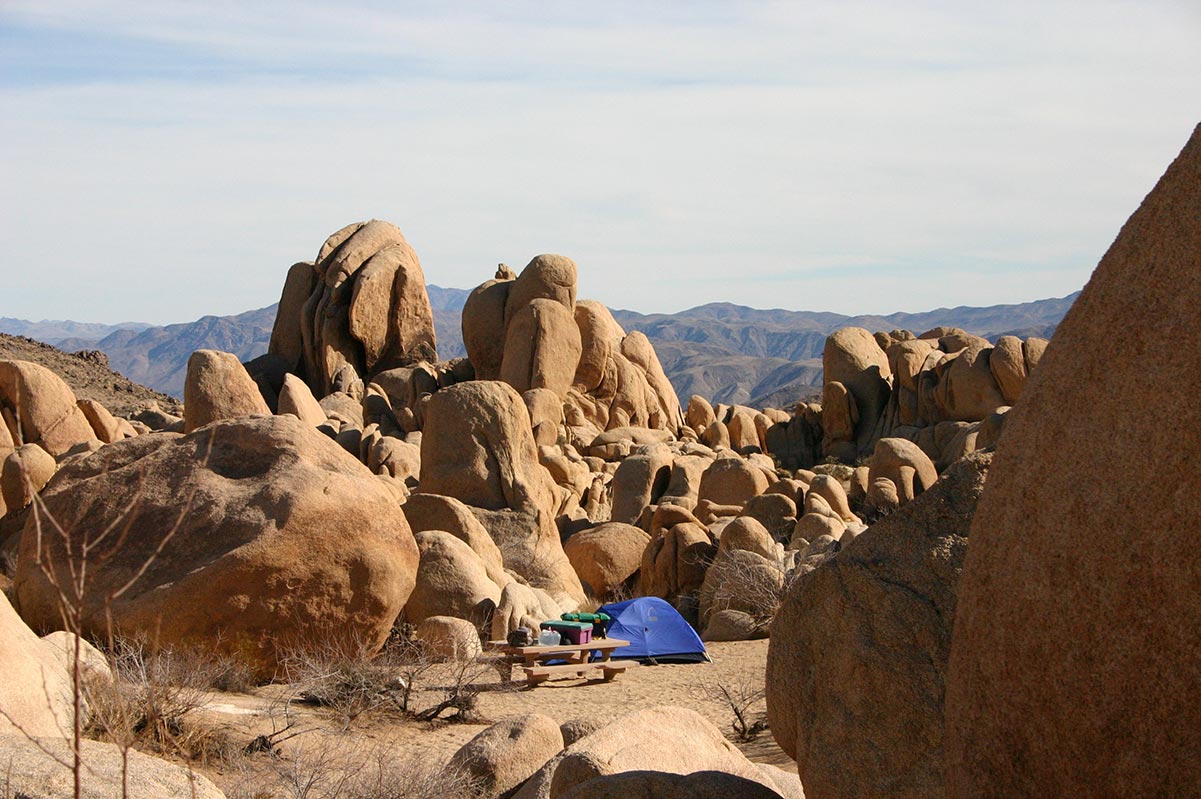
Joshua Tree visitors have many options for camping both in and out of the national park. There are over 500 campsites located inside of Joshua Tree. From May-September, many of the campsites are first-come, first-served, but there are also group campsites available for larger parties that allow for reservations. Campgrounds usually fill up quickly so it is recommended that you have an alternate overnight plan or visit during September-May when many of the campsites are available for reservation only. If you choose to stay somewhere outside of the national park or if you can't find a campsite, there are also private campgrounds outside of the park and you can find lodging in 29 Palms and the town of Joshua Tree.
Scenery & Photography
Joshua Tree National Park is home to some of the most stunning views for sightseers and photographers alike.
Arch Rock

Found slightly off of trail at the White Tank Campground, Arch Rock is a large 30-foot granite rock situated within a large boulder field. The Arch Rock trail is a short 0.5 mile loop and you can reach the arch by veering slightly off trail. At the base of the arch, one can find stunning views framed by the magnificent natural arch, perfect for anyone seeking a phenomenal view within the park.
Rock
Keys View
Keys View is one of the most popular viewpoints within Joshua Tree - and for a good reason. From this viewpoint, visitors can get a bird's eye view of the national park as well as slights of the Coachella Valley, the San Andreas Fault, the Santa Rosa Mountains, and San Gorgonio Mountain. This drive-up and wheelchair accessible viewpoint makes it a perfect opportunity for any visitor to enjoy the beauty of Joshua Tree.
Skull Rock
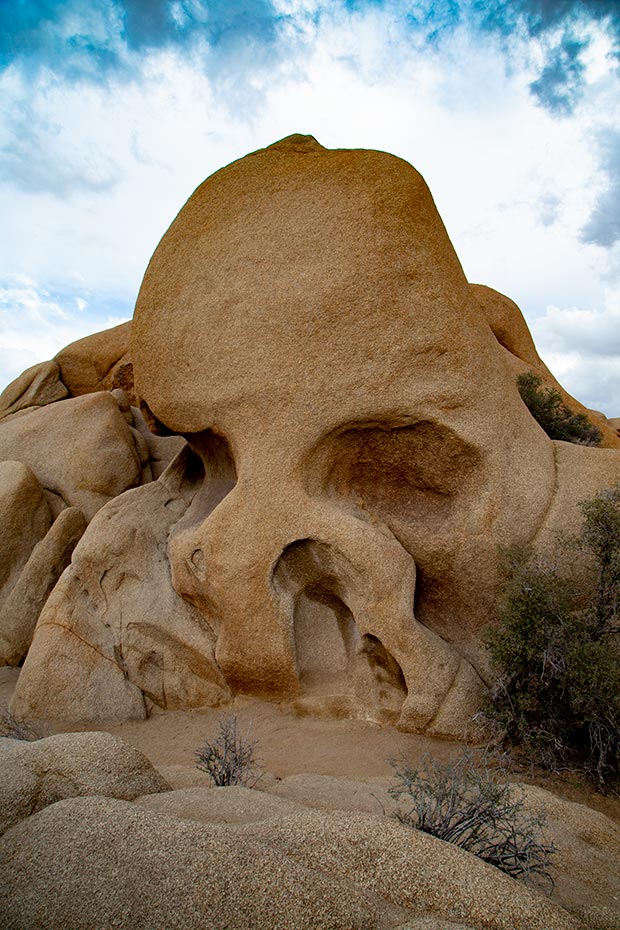
A notable favorite within the park, Skull Rock is located along the main east-west park road and is accessible from within Jumbo Rocks Campground. This 1.7 mile loop is an easy hike for those wishing to stretch their legs and capture an amazing photo of this unique rock formation. Parking is located just across the road from the rock making it a bit more accessible for those who wish to travel by car rather than on foot.
Some Important Things To Know Before Your Visit
There is no cell phone service throughout the park, so it is recommended that visitors bring an ample supply of water (at least one gallon per person) as well as provide adequate sun protection (sunscreen, hat, and sunglasses). The summer heat can make outdoor activities more strenuous, so the ideal time to visit Joshua Tree National Park is October-May.
Click here to see the Joshua Tree National Park poster.
Rob Decker is a photographer and graphic artist who had the rare privilege of studying under Ansel Adams in Yosemite National Park when he was just 19 years old. Now, Rob is on a journey to explore and photograph all of America's National Parks. He's creating WPA-style posters to help people celebrate their own national park adventures — as well as encourage others to get out and explore!
Source: https://national-park-posters.com/blogs/national-park-posters/best-things-to-do-at-joshua-tree-national-park
